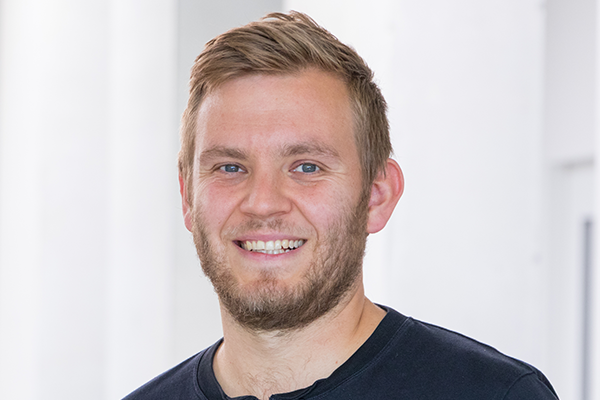News & Press
Max Mylo receives Camillo Schneider Award 2023
German Dendrological Society honours biologist's dissertation on damage control in plants

Max Mylo. Photo: Michal Rössler
Biologist Dr. Max Mylo from the Cluster of Excellence "Living, Adaptive and Energy-autonomous Materials Systems" (livMatS) has been awarded the Camillo Schneider Award ("Camillo-Schneider-Preis") 2023 for his dissertation. The Camillo Schneider Award is awarded annually by the German Dendrological Society ("Deutsche Dendrologische Gesellschaft") to young researchers for outstanding scientific work in dendrology and is endowed with 4,000 euros. Mylo wrote his thesis in the Plant Biomechanics group at the Botanic Garden of the University of Freiburg. In his work, he investigated how plants prevent, mitigate or control damage. Based on his findings, it will be possible to create bio-inspired material systems that are significantly more durable than conventional materials.
Mylo selected the European mistletoe (Viscum album) and two species of Opuntia cactus (Opuntia ficus-indica, Cylindropuntia bigelovii) as model organisms for his cumulative thesis entitled "Damage control in the plant kingdom: a case study on the morphology, anatomy and biomechanics of European mistletoe (Viscum album) and selected cactus species". Mylo used morphological, anatomical and biomechanical analyses to show how the semi-parasitic mistletoe anchors itself to its host tree. The mistletoe forms a multitude of wedge-shaped structures, so-called sinkers, which grow into the host tree. The cells along the mistletoe-host interface form a gradual transition between the non-woody mistletoe tissue and the woody host tissue in terms of cell wall thickness and degree of lignification. This anchoring provides a damage-resistant and long-lasting connection.
Mylo also looked at the tissues that make up the junctions of the Opuntia branches and how they react under tensile stress. The teddy bear cactus (C. bigelovii), for example, sheds its branches under low mechanical stress. These offshoots form roots and grow into new plants. The prickly pear (O. ficus-indica), on the other hand, reinforces the junctions in the early stages of growth with additional tissue, which enables a tree-like growth form. To analyse the cacti, Mylo used morphometric measurements, imaging techniques (Magnetic Resonance Imaging, MRI), light microscopy and tensile tests. Mylo's work was supervised by Prof. Dr. Thomas Speck, Director of the Botanical Garden of the University of Freiburg, Plant Biomechanics Group and member of the Cluster of Excellence livMatS spokesperson team, and Dr. Olga Speck, Plant Biomechanics Group and Principal Investigator in the Cluster of Excellence livMatS.
